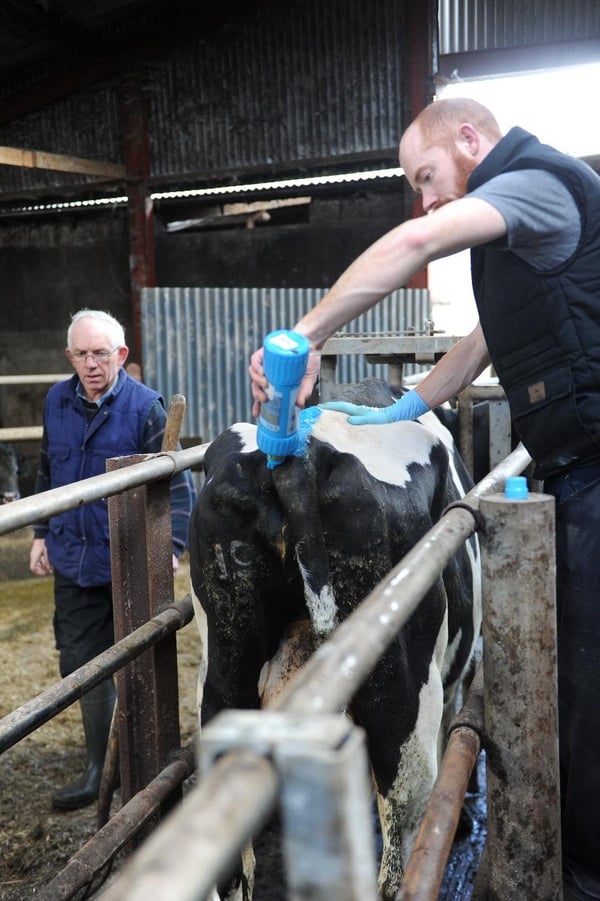Managing Dairy Cows during the Pre-breeding season
Suckler farmer? Click here to read our blog post about managing your suckler cows.
Correct management of your cows in the period between calving down and the start of the breeding season is critical to ensure that you get your cows back in calf as quickly as possible. The goal is to get them cycling before the start of the breeding season and to give them the best chance of conceiving to their first service, so their calving interval can be as close to 365 days as possible.We have put together a short blog and checklist to help you get your cows back in calf.
Pre-Heat detection
The aim is to have your dairy cows cycling by 42 days after calving. The first step in this process is to make sure you have a way of recording what cows have started cycling and what cows have not.

There is a range of methods and tools you can use to monitor what cows are in heat. These range from the inexpensive solutions like emulsion paint or crayons to high-tech solutions that monitor everything from heats and health traits.

The most commonly used and inexpensive method is tail painting. This allows you to quickly identify what cows are cycling or may have been cycling by the fact the tail paint has been rubbed off. Methods like this work great when combined with a recording software (like Herdwatch) that allows to quickly identify the cows that have and have not yet cycled.
What does each breeding cycle cost me?
Teagasc research has shown that each missed heat costs a spring farming dairy farmer €250 per cow per heat. This is the opportunity cost of missing out on 3 weeks of milk on cheap spring grass.
Getting ahead of any problem calvers
Cows that experience a difficult calving are likely to have reproductive issues such as cysts or uterine infections. This can slow down or prevent a return to normal reproductive activity. It is good practice to get the vet to scan these cows around 35 days after calving so you can identify any possible issues early which might delay that cow going back in calf.
Keep an eye on Body Condition Score
Cows with a body condition score (BCS) of less than 2.9 will have a higher probability of not cycling. Moving these cows to once a day milking while maintaining their feeding levels will increase the BCS and help them get cycling quicker.
Cows with poor feet of lameness
Identify any cows that have bad feet or lameness issues and treat them as early as possible. Lameness will put undue stress on the cow and may either suppress her reproductive cycle or lead to loss in BCS.
Vaccination
Vaccinate at least 4 weeks before mating season start date to ensure maximum efficacy of the vaccination.


